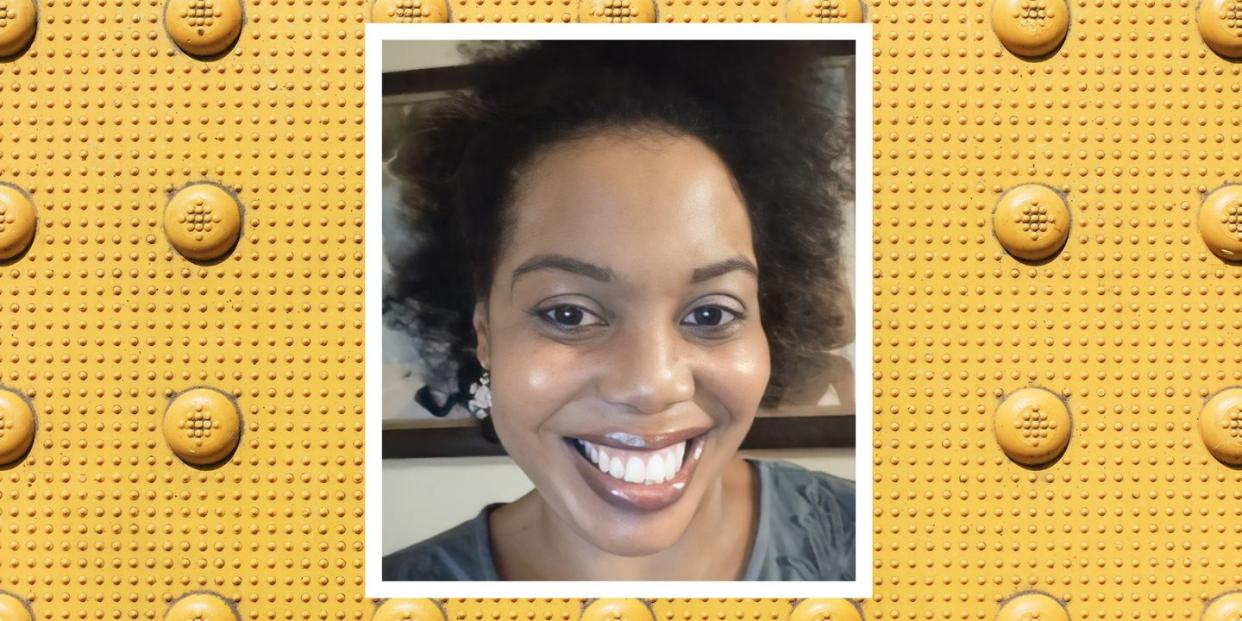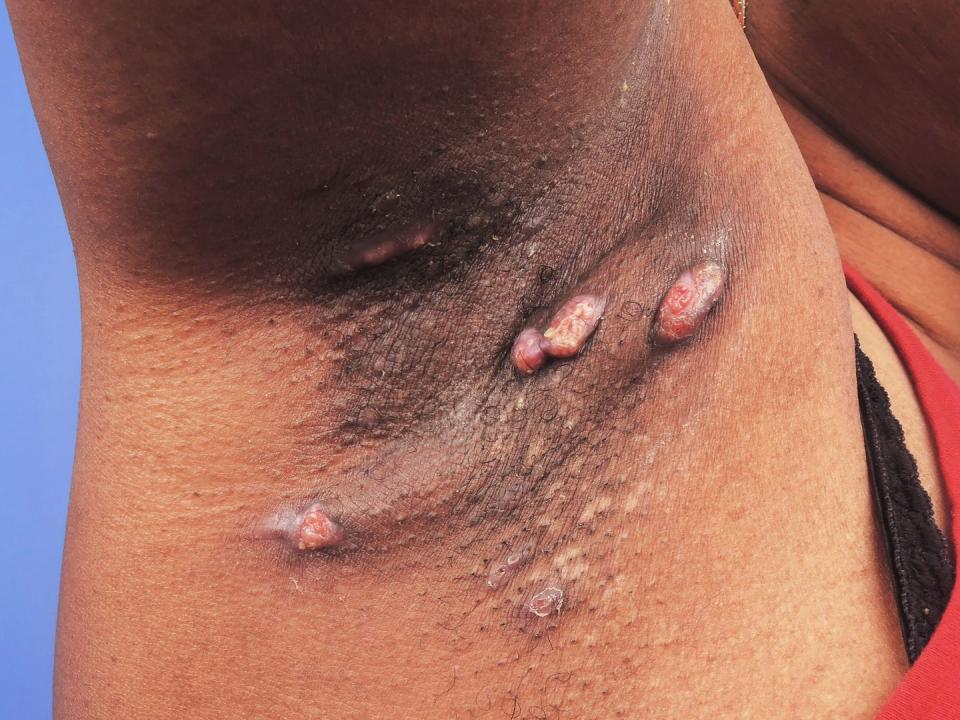My Painful ‘Acne’ Turned Out To Be a Rare Skin Condition

My name is Tia Ivy, and I am 40 years old. I live in Northeast Ohio. I am a home health aide and I use Keep it Real HS, my Twitter page, to help other women navigate life with hidradenitis suppurativa (HS).
When I was 10 I hit puberty and, two years later, I started developing acne on my face. I tried everything from Clearasil to Proactiv to Clindamycin. You name the acne product at the drugstore—I’ve tried it.
Once I got through puberty my acne got a little better and, when I started seeing boils on my inner thighs and under my arms, I figured it had to be something related to my zits and breakouts. I was basically just dealing with whatever they were until my 20s when I was in so much pain I took myself to the emergency room to see what could be done. They took a culture and told me my lumps looked like a staph infection. I was sent home and told to use antibacterial soap. No one recommended I see a dermatologist.
At the time, I thought “What’s happening to my body?” During an active flare sleeping in certain positions was uncomfortable. And when the material on the inside of my pants rubbed against the boils it would sometimes make them bleed. But I kept on living my life—and dealt with the pain—for the next two decades.
Learning that I had hidradenitis suppurativa
Then, four years ago, I switched to a new primary care doctor who just so happened to be African American. She told me the boils were caused by hidradenitis suppurativa (HS), an immunological condition that causes small, painful lumps to form under the skin. She explained that African Americans have it at disproportionately higher numbers, and that it’s often misdiagnosed in the early stages since it mimics other conditions. She also said African Americans with the condition tend not to seek help for HS. I felt shocked, sure, but more than anything else, I was so happy she told me and felt lucky to have found her.
From there, I knew I was in good hands. She immediately put me on topicals and antibiotics that helped, but I was still dealing with painful lumps on my inner thighs and in my armpits.
Opting for the surgical route
To deal with the lumps once and for all, I decided to have a dermatologist perform surgery on both of my thighs in 2018. The outpatient procedure is called excision surgery and the goal is to remove all the growths. It was a very tough recovery—you go home with drains and staples in your legs—and I have a really long scar now, but I’m really glad I did it. I had surgery on my left armpit in 2019. This fall, during the pandemic, I got my right armpit done.

I feel so much better now. I mean, I have these ugly scars, but it feels so good to wear shirts—and deodorant—and not worry about irritation. I also feel mentally relieved because I’ve gained so much knowledge about HS over the last four years. Best of all, I don’t feel as overwhelmed as I once did. I’m ready to start the healing process and focus more on advocating and helping others with HS.
Why advocacy is so vital to my mental healing
I spread awareness about HS and help women with the conditon because it’s one of those things people don’t know that much about. There are also a lot of misconceptions about HS. For example, sometimes I get the feeling that people think I brought this on myself because of my diet or health habits. While lifestyle factors may worsen HS, they don’t cause it.
Living w/a chronic skin condition like #HidradenitisSuppurativa can be difficult. I know firsthand as I’ve spent years navigating this journey. So, I'm encouraging other #HSWarriors to break the silence and share their HS story. #IgniteTheLight4HS https://t.co/n2VuQK165Q pic.twitter.com/dYSNaolTrB
— Tia Marie Ivy (@KeepItRealHs) August 3, 2020
My goal now is to focus on growing and supporting the HS community by sharing my story, starting conversations about the condition, and advocating for proper treatment—especially for people of color. The thing that makes me happiest is when someone sends me a DM on Twitter or sends me a Facebook message where they thank me for speaking up about HS. Just the other day a young lady emailed me and thanked me for all of my suggestions and encouragement after I shared information on treatment options that are available. I’m really happy I can be a resource for others.
I don’t want people to wait as long as I did to get the answers they need. I’m glad to be there for others and I plan to always be there to give them that support.
You Might Also Like

